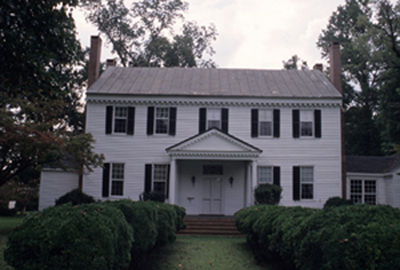The Capeharts
(Bertie County)
Featured Characters – 1860
Built in 1838 by George Washington Capehart, Scotch Hall once consisted of the entire peninsula from Salmon Creek to the Albemarle Sound. It was the center of the largest plantation complex in Bertie County and was built on over 8,000 acres of land worked by almost 300 slaves with an income of over $100,000. The Capehart family home was also the setting for George Higby Throop’s Bertie (1851), a novel about antebellum plantation life. A tutor for the children of Scotch Hall for seven months, Throop was able to reveal in his book the excitement of daily life for families living along the Chowan River. He wrote of their visits with one another, dining at different homes, fishing and hunting, the thrill of mail days at the post office, the festivities of the Christmas season (even for the slaves), and the vacations in Nags Head for the summer.
However, Scotch Hall and the family that resided there would not be immune to the effects of the coming national conflict. With the outbreak of the Civil War, the plantation was under the threat of destruction at the hands of Union forces but was granted a respite when, according to historical reports, Capehart’s wife, Susan, informed them that her child was sick. It was then that the Capeharts left the house in the care of a James A. Smith to escape the frequent presence of the Union Army in the Albemarle Sound area and at the plantation. The overseer that stayed at the plantation witnessed the Battle of Batchelor’s Bay while the Capeharts were away. The 1870 census lists the Capehart assets as $12,600. After the war, Capehart and his wife celebrated their golden wedding anniversary in 1883, when their son wrote the family names on a pane of window glass that can still be seen in the house today. Scotch Hall has remained in the Capehart family.
